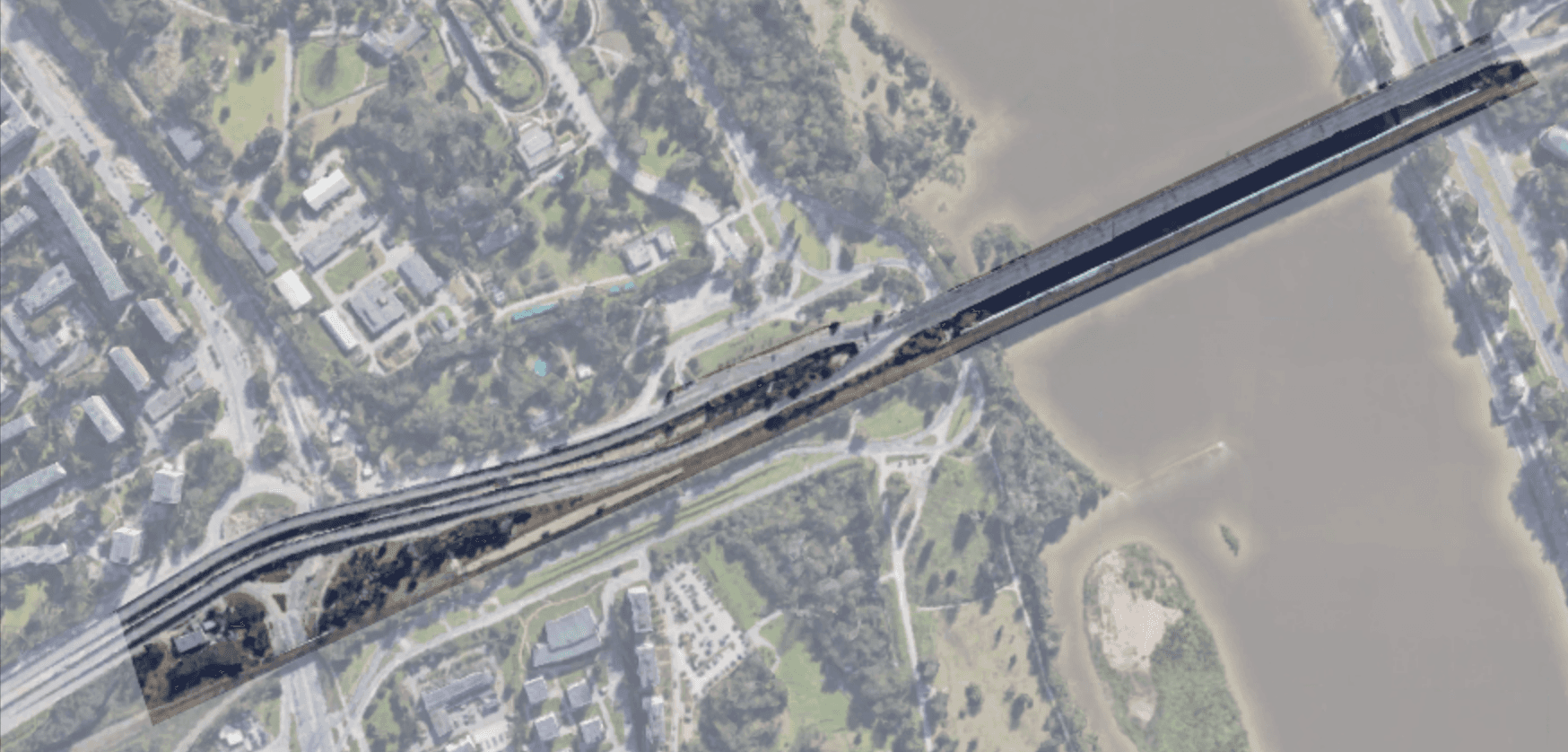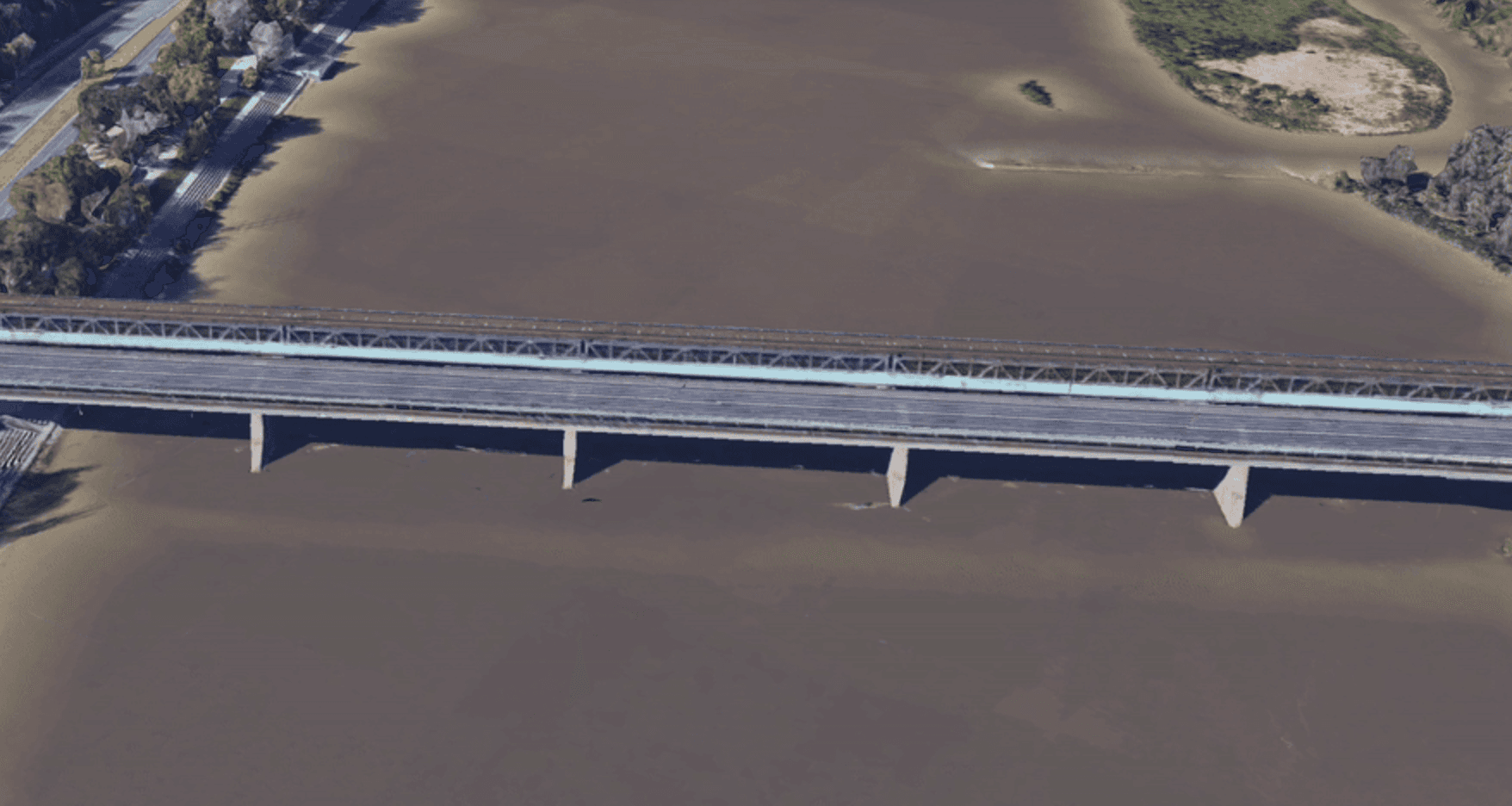AI+infrastructure
AI-Powered Bridge Inspection
Automated Crack, Corrosion, and Structural Defect Detection
Bridges are essential infrastructure, yet manual inspections are slow, costly, and pose safety risks.
Lepei.pro’s AI-driven bridge inspection system transforms this process by automating defect detection using deep learning, drones, and 3D scanning.
Faster, safer, and 80% more efficient inspections with high-accuracy defect analysis.
Challenges in bridge inspection:
Structural integrity risks due to fatigue, corrosion, and natural wear.
Costly, time-intensive manual inspections and high-risk for inspectors.
The need for modern technology to reduce time, cost, and improve safety.
Our Solution:
AI-driven inspection algorithm using computer vision and deep learning methods, especially convolutional neural networks (CNNs).
Inspection and Maintenance of City Bridge:
1-Project Scope and Bridge Details:
Bridge Specifications:
Steel-truss double bridge spanning 1520 meters with a main span of 430 meters over a major waterway.
The bridge has undergone minor repairs over the years but is now due for a more comprehensive inspection.
The bridge consists of two parts. Automobile and railway.
A separate approach was used for each part.
Structural Components:
Steel beams, steel trusses, and concrete decking. Structural components include truss joints, cable anchors, and crossbeams, all of which are high-risk areas for corrosion and fatigue due to exposure to river humidity.
The client was concerned about the areas most vulnerable to corrosion and stress cracking, including cable anchors and steel support beams near midspan and at both south piers. There is also evidence of moderate cracking in steel columns and early rust on several trusses.
The latest inspection showed visible surface rust and minor pitting, which should be included in this inspection.
2-Inspection Details:
Data collection:
Combination of UAV (drone) and Terrestrial Laser Scanning (TLS) images. Drone images capture visible defects on hard to reach trusses and cross beams, while TLS provides accurate measurements on areas closer to the bridge deck.
Real-time detection was not required.
Digital twin integration is required. Changes in defect progression over time need to be monitored. To monitor crack growth, rust spread and pitting depth as part of a predictive maintenance plan.
3-Structural Components:
Defect Type Requirements:
Key defects to detect include fatigue cracks, pitting, surface rust and any signs of structural deformation. Particular attention should be paid to cable anchors and steel connections where the risk of corrosion is highest. Measure crack length, depth and width and provide area estimates for rust areas and pinholes. Measuring the depth of cracks and pinholes on structural steel will be essential to determine their severity.
Detection Accuracy:
Immediate alerts should be generated for cracks greater than 1 cm wide or 20cm long, or when rust covers an area greater than 70cm² on any single component. These thresholds are based on maintenance recommendations and indicate defects requiring urgent repair.
Inspection work, especially drone flights over lanes, should be carried out during off-peak hours or late at night. Lane closures should be avoided.
Types of cracks used in the DL model dataset. Cracks in steel are treated in the same way by the algorithm.
4-Technology and Data Requirements
Annotated images and a comprehensive defect report in CSV format for easy integration with existing database.
3D models with highlighted defect zones in OBJ or STL file formats.
The results should be compatible with current infrastructure management software, which supports BIM-compatible data for digital twins.
Compatible cloud-based database for data storage, so any integration with cloud services.
Augmented Reality usage considered separately
1-Preparation Phase:
Verification of UAV flight paths and TLS settings for optimal data collection according to traffic and environmental constraints.
Software configuration: Configure AI algorithms (ConvNext, Encoder-Decoder model) to meet the thresholds for crack, rust, etc. detection specific to this bridge. (For more details on the algorithm, please see the end of the presentation)
Prepare personnel and equipment: Assign certified UAV operators and inspection technicians; prepare UAVs and TLS equipment for deployment.
2-Data Collection and Inspection:
Data collection methods: Use UAV (drone) survey for aerial inspection of hard-to-reach areas and Terrestrial Laser Scanning (TLS) for high-precision measurements closer to the bridge deck and piers.
Personnel: 2 UAV operators, 1 inspection supervisor, and 1 data collection specialist.
By merging drone images with TLS data, each section of the bridge is mapped using both high-resolution images and 3D models.
This integration allows for both surface-level defect detection (using drone images) and precise measurements of cracks and deformations (using TLS data).
3-AI-Powered Data Processing and Defect Detection:
Image segmentation and analysis:
Crack detection: AI segmentation identifies and classifies each detected crack, providing length, width and depth measurements.
Crack Width: 🟥 >0.5 mm 🟪 0.1-0.5 mm 🟨 0.05-0.1 mm 🟩 <0.05 mm 🟧 rust zone
Crack detection results. Detection accuracy for wall surface is 96-98%
Rust on elements: 🟪 - Stage One, 🟨 - Stage Two, 🟥 - Stage Three
Rust detection results. Detection accuracy is 97-98%



















